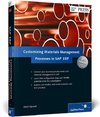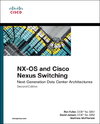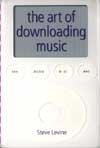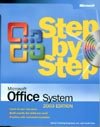
Laptops
Source: Wikipedia. Pages: 65. Chapters: AMD mobile platform, AMD Vision, Barebook, Centrino, Chromebook, Clevo x7200, Commodore LCD, Common Building Block, Elonex ONEt, Epson HX-20, Fujitsu Lifebook, Gavilan SC, Grid Compass, Grid GridCase 1535EXP, Grid... Viac o knihe
Produkt je dočasne nedostupný
19.45 €
bežná cena: 22.10 €
O knihe
Source: Wikipedia. Pages: 65. Chapters: AMD mobile platform, AMD Vision, Barebook, Centrino, Chromebook, Clevo x7200, Commodore LCD, Common Building Block, Elonex ONEt, Epson HX-20, Fujitsu Lifebook, Gavilan SC, Grid Compass, Grid GridCase 1535EXP, Grid Systems Corporation, History of laptops, Instant-off, Laptopical, Laptop charging trolley, Laptop cooler, Laptop skin, Laptop theft, LG E-book, List of laptop brands and manufacturers, Morrow Pivot II, NanoBook, OLPC XO-1, Prey (software), RDI PowerLite, Samsung Sens, Sharp Actius RD3D Notebook, Sharp PC-5000, SPARCbook, Speedball (accessory), Subnotebook, Tianhua GX-1C, Timeline of portable computers, Toshiba Libretto, Toshiba T1100, Toshiba T1200, Toshiba T3100, Toughbook, Ultrabook, Wearable computer, Xnote, Zenith Minisport. Excerpt: A laptop computer is a personal computer for mobile use. A laptop has most of the same components as a desktop computer, including a display, a keyboard, a pointing device such as a touchpad (also known as a trackpad) and/or a pointing stick, and speakers into a single unit. A laptop is powered by mains electricity via an AC adapter, and can be used away from an outlet using a rechargeable battery. Laptops are also sometimes called notebook computers, notebooks, ultrabooks or netbooks. Portable computers, originally monochrome CRT-based and developed into the modern laptops, were originally considered to be a small niche market, mostly for specialized field applications such as the military, accountants and sales representatives. As portable computers became smaller, lighter, cheaper, more powerful and as screens became larger and of better quality, laptops became very widely used for all sorts of purposes. Alan Kay with "Dynabook" prototype (5 November 2008 in Mountain View, California) The Epson HX-20As the personal computer (PC) became feasible in the 1970s, the idea of a portable personal computer followed. A "personal, portable information manipulator" was imagined by Alan Kay at Xerox PARC in 1968, and described in his 1972 paper as the "Dynabook". The IBM Special Computer APL Machine Portable (SCAMP), was demonstrated in 1973. This prototype was based on the IBM PALM processor (Put All Logic in Microcode or 128 bit). The IBM 5100, the first commercially available portable computer, appeared in September 1975, and was based on the SCAMP prototype. As 8-bit CPU machines became widely accepted, the number of portables increased rapidly. The Osborne 1, released in 1981, used the Zilog Z80 and weighed 23.6 pounds (10.7 kg). It had no battery, a 5 in (13 cm) CRT screen, and dual 5.25 in (13.3 cm) single-density floppy drives. In the same year the first laptop-sized portable computer, the Epson HX-20, was announced. The Epson had a LCD screen, a rechargeable battery
- Vydavateľstvo: Books LLC, Reference Series
- Formát: Paperback
- Jazyk:
- ISBN: 9781156517796


 Nemecký jazyk
Nemecký jazyk 

 Anglický jazyk
Anglický jazyk 







